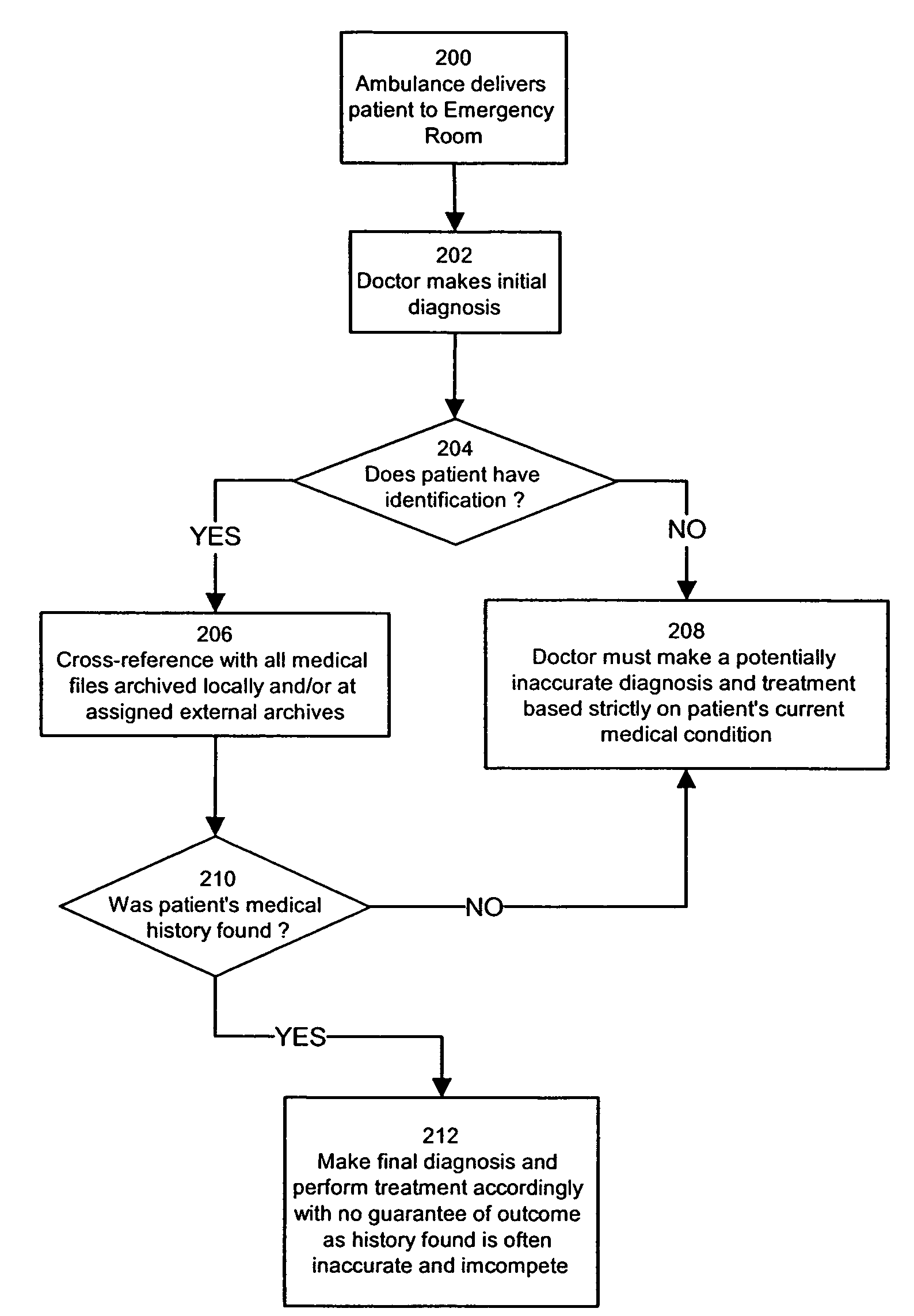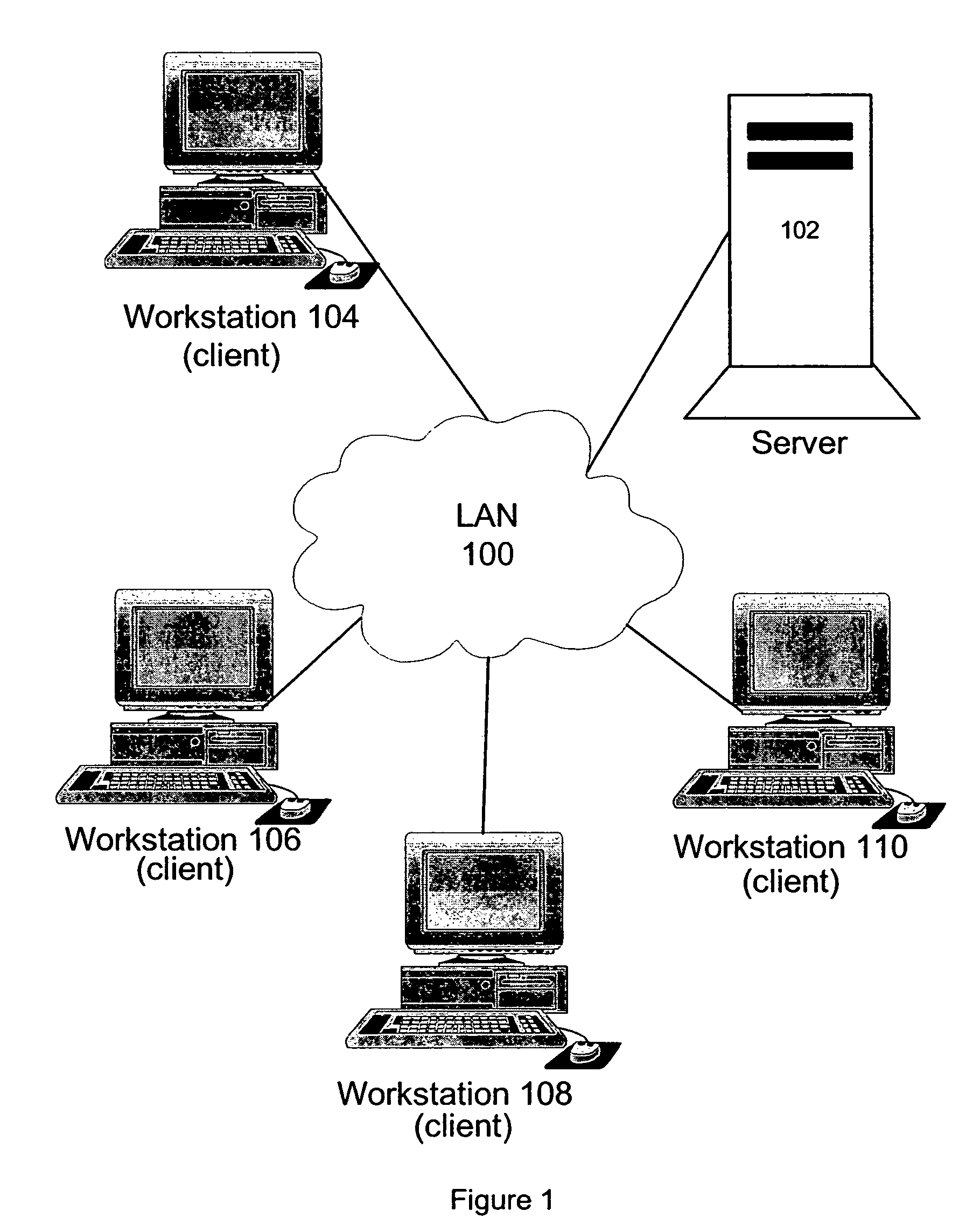System and method for electronically managing medical data files in order to facilitate genetic research
a technology for medical data and electronic management, applied in the field of information distribution systems, can solve the problems of increasing the complexity of their management, enlarging their traditional mandate, and high cost of stocking information and storing files in a local network
- Summary
- Abstract
- Description
- Claims
- Application Information
AI Technical Summary
Problems solved by technology
Method used
Image
Examples
Embodiment Construction
[0033]FIG. 1 illustrates a generic client-server environment, enabled by a local area network (LAN) 100. Client-server computing is a cooperative relationship between one or more clients and one or more servers. The clients 104, 106, 108, and 110 submit requests to the server 102, which processes the requests and returns the results to the clients. Although the processing is initiated by the client(s), both client(s) and server cooperate to successfully execute an application. Therefore, the interaction between the client and the server processes is a transactional exchange in which the client is proactive and the server is reactive. In addition to client(s) and server, the third essential component of the client-server environment is the network. Client-server computing is distributed computing. In other words, users, applications, and resources are distributed in response to business requirements and are linked by a single LAN 100 or by an Internet of networks.
[0034]Currently, mos...
PUM
 Login to View More
Login to View More Abstract
Description
Claims
Application Information
 Login to View More
Login to View More - R&D
- Intellectual Property
- Life Sciences
- Materials
- Tech Scout
- Unparalleled Data Quality
- Higher Quality Content
- 60% Fewer Hallucinations
Browse by: Latest US Patents, China's latest patents, Technical Efficacy Thesaurus, Application Domain, Technology Topic, Popular Technical Reports.
© 2025 PatSnap. All rights reserved.Legal|Privacy policy|Modern Slavery Act Transparency Statement|Sitemap|About US| Contact US: help@patsnap.com



